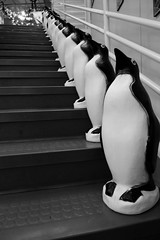If there is something that photographers like to do more than shop for cameras it is this: photographers love to tell you why a given machine is not good enough for what they do. Cameras are too small, or too big, or too slow or too loud, or too “plasticky”. The flash system might be no good. Or the lens system might be missing that one critical lens, usually an expensive fast prime. Another popular reason not to buy a camera is that it’s not a Leica.
Point and shoot cameras probably come in for the most abuse. Even the phrase “point and shoot” usually comes out of your mouth in a condescending manner. As in, “Oh, I could never use a point and shoot, I need a serious tool.” I am as guilty of this as anyone. I have spent my share of time denigrating these machines, and I was not entirely wrong. The compact camera sector is for the most part full of redundant features, poor performance and mushy image quality.
But the truth is that this is all most people really need. More surprisingly, around 90% of the time it’s all you and I need too.
I first suspected this on the first trip to Paris that I took with a digital camera. I had my “serious” gear with me too and shot my usual ten or twenty rolls of film. I also took a few hundred shots with the small digital point and shoot that I brought “just in case.” Those are the only pictures I’ve looked at from that trip.
While I went on to buy bigger and faster cameras, the pictures have not really gotten much better. They are sharper. They have better color. They have better noise performance at high ISOs. They might have been easier to capture. But they are not better pictures.
However, even with this evidence in front of my eyes, my use of my small camera waned. It was always clunky and slow, and the much faster D200 made this fault even more annoying. It was also always kind of useless in marginal light. More and more, the point and shoot stayed at home and I annoyed myself by carrying the 2lb monster all over the place whether I needed to or not. This made me sad because often I would not have a camera when I wanted one.
The problem with buying a new compact camera is that the market sector is full of cameras with redundant features, poor performance and mushy image quality. But even so, the last year has seen at least two interesting models come around. The Canon G10 and the Panasonc LX-3 (and its twice-as-expensive-but-identical-except-for-the-red-dot Leica twin). After a lot of wanky and useless deliberation I violated my “always buy Canon point and shoots” rule and picked up the Panasonic. It is smaller, a bit quicker, has a more interesting lens, and most importantly it still has the flash shoe so I can use it with my trusty flash in bad light.
The camera has been a happy surprise. While it’s true that even at base ISO you can’t really get a nice sharp edge out of this thing, you only notice this if you are staring at the picture at 100% magnfiication. Therefore this doesn’t really matter. What I am most impressed with is that fact that the machine can focus, shoot and then focus and shoot again quickly enough that it doesn’t piss me off. Is it DSLR fast? Not quite. But it has at least reached the speed of that benchmark of small point and shoot cameras: the Olympus Stylus.
Other things to like: the wide lens and the black and white mode:
Finally, I have a completely irrational amount of fun attaching my SB-800 flash, which is four times the size of the camera, and lighting up those dark corners with bounced flash coming from the left of the camera. It’s great to be able to use flash effectively with a small camera. All I need now is wireless triggers and I could practically leave the big camera at home unless I want big prints.
My inner girly man has always suspected that my ceiling as a photographer could probably be reached with marginal equipment. I’ve generally suppressed those thoughts in order to keep the consumer economy going. But the Panasonic has changed my thinking and expectations about what compact digitals can do. I’d still like a quicker camera. I’d still like a faster and better sensor. But I’m now more optimistic that at some point these features will be delivered in a small package that won’t hurt my shoulders and back to carry around.
I should really try and find one of those Panasonic G1s to try.






The Panasonic G1 seems nice, but my gearwhore wanker approach on this front is to lust after the Oly µ4/3 body (I don’t care if the leather is pleather, it still looks awesome) and Panasonic 20mm f1.7 pancake for the truly small form factor “serious” camera. I will ditch the k10d and pancake if it lives up..
Yeah we can all dream.
http://www.flickr.com/photos/13991176@N08/2968521918/
The thing that annoys me about most point and shoot cameras is how long they take to actually take the shot after I press the button. This is not $2,000 worth of annoyance, so I live with it.
The most useful camera I own is the one I have with me, which usually means the camera in my phone….
FWIW the most surprising thing about the LX-3 was that the time from push the button to shoot the picture isn’t too bad.